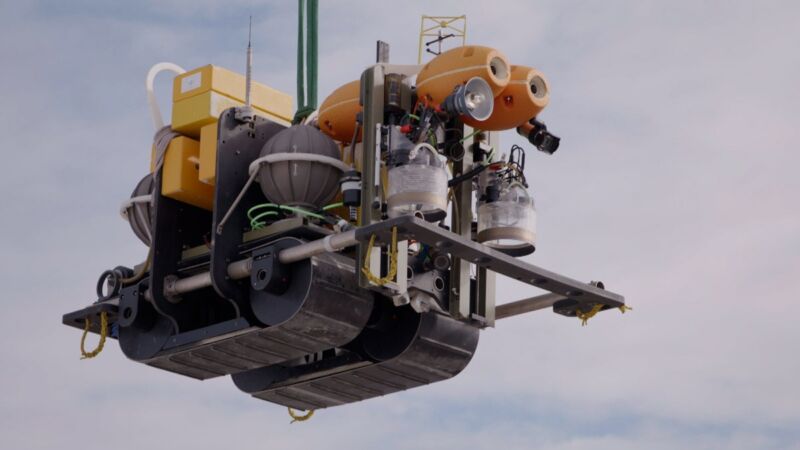
Enlarge / With extra-wide tracks and a bunch of other clever features, the Benthic Rover II can roam the seafloor for years at a time. (credit: Madison Pobis | MBARI)
The Benthic Rover II is the size of a compact car, although it rocks fat treads, making it more like a scientific tank. That, along with the two googly-eye-like flotation devices on its front, gives it a sort of WALL-E vibe. Only instead of exploring a garbage-strewn landscape, BR-II roams the Pacific seafloor, 13,000 feet deep. The robot’s mission: to prowl the squishy terrain in search of clues about how the deep ocean processes carbon.
That mission begins with a wild ride, 180 miles off the coast of Southern California. Scientists at the Monterey Bay Aquarium Research Institute lower BR-II into the water and then … drop it. Completely untethered, the robot free-falls for two and a half hours, landing on the abyssal plains—great stretches of what you might generously call muck. “It's mushy and dusty at the same time,” says MBARI electrical engineer Alana Sherman, coauthor on a new paper in Science Robotics describing findings from the robot’s adventures. “Which is part of the reason it’s a tracked vehicle, and it has these really wide treads.” That extra surface area distributes the robot’s weight so it doesn’t sink into the sand.
No comments:
Post a Comment